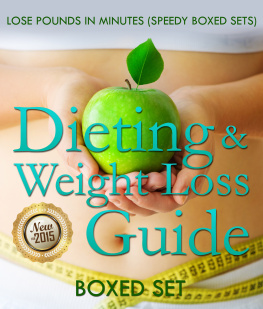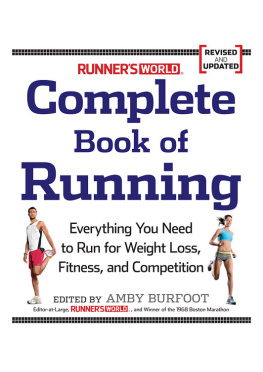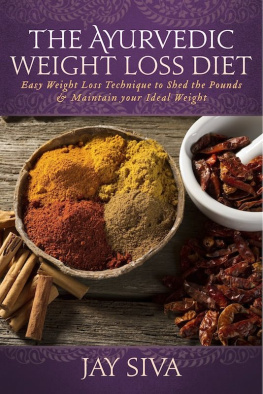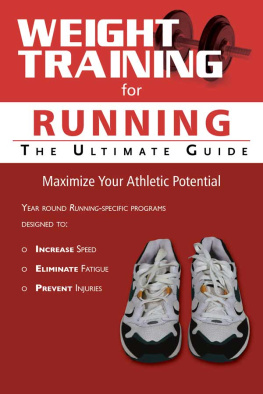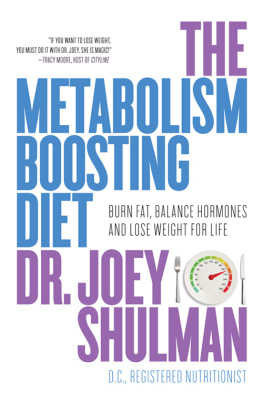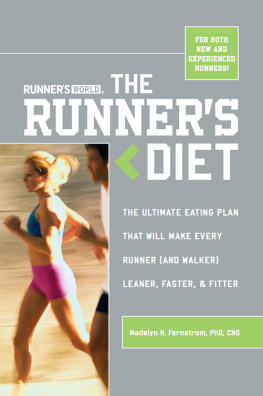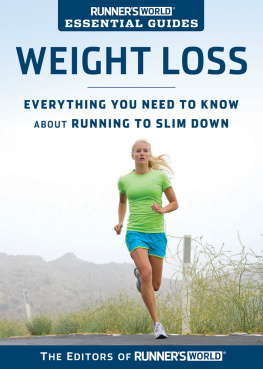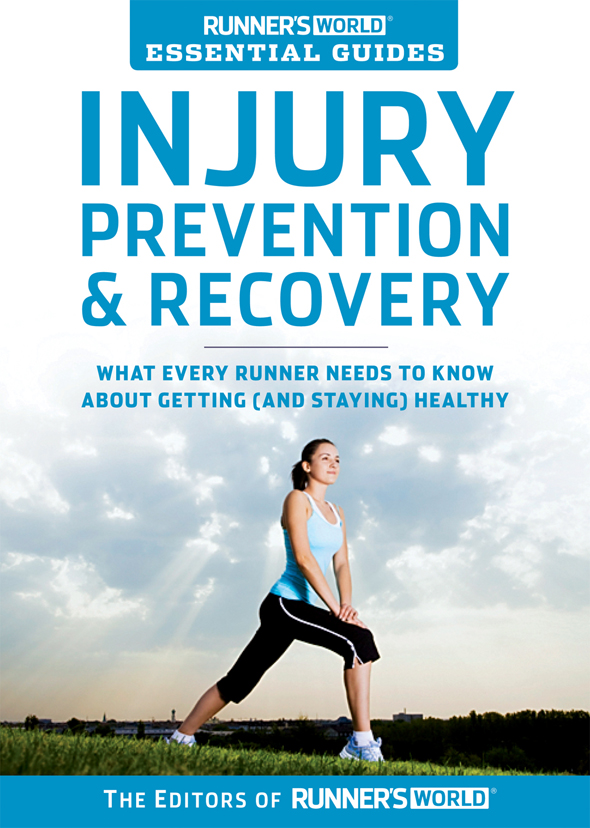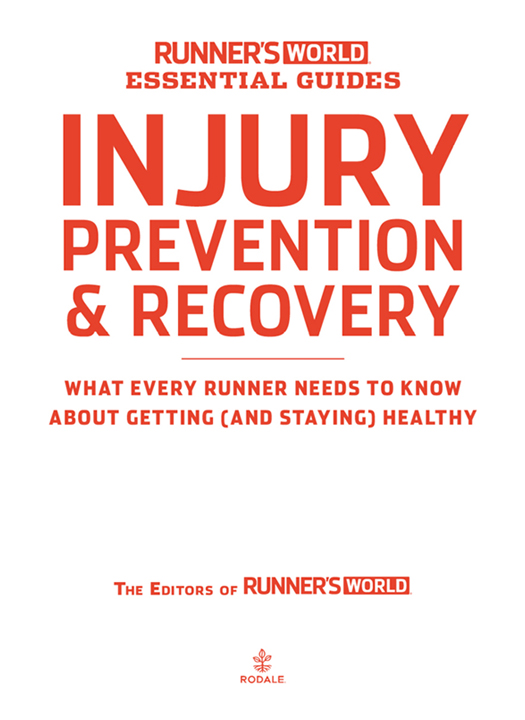INTRODUCTION
In an ideal runners world, every step of every mile would be 100 percent pain-free. No aches, no twinges, no lingering soreness from yesterdays workout. The reality is that many runners constantly deal with a slight (or not so slight) disturbancea tender foot, a tight hamstring, a whiny knee. While these nagging issues often arent serious enough to require a time-out, they are annoying, especially when they dont let you fully enjoy your time on the roads.
Think of running pains in terms of a spectrum. At one end you have severe, full-blown injuriescall it the red zone, which includes stress fractures that require time off. The other end, where youre in top form, is the green zone. Mild, transient aches that bug you one day and disappear the next sit closer to the green end. Unfortunately, many runners get stuck in the middlethe not-quite-injured but not-quite-healthy yellow zone.
Whether you land in the red, linger in the yellow, or return to the green end of the spectrum depends largely on how you react when that first stab of pain hits, says Richard J. Price, M.D., a sports physician at Rocky Mountain Orthopedic Associates in Grand Junction, Colorado. Often it comes down to whether you take a little time off now or a lot of time off later, he says. You can reduce your risk of ending up in the red zone if at the first sign of an issue, you back off your mileage, reduce the intensity of your runs, start a treatment program, and develop a proactive long-term injury-prevention strategy, such as strength training, stretching, and regular foam-rolling. Physical therapy is like homework, Dr. Price says. None of us likes having to do it, but if you dont do it, the issue will come back.
Seriously, these issues can trap you in that nefarious yellow zone where you are always cautious. Worse, they can turn into an acute injury that forces you to take a layoff. Well tell you how to keep annoying pains in check so you can move intoand, with hope, stay inthe green zone.
PART ONE
Injury
Prevention
DAMAGE CONTROL
It can make you limp down the stairs or struggle to get out of your chair, but that doesnt mean muscle soreness is all bad. Muscles go through physical stress when we exercise, and the discomfort that stress causes may be perfectly normal, says Allan Goldfarb, Ph.D., a professor of exercise physiology at the University of North CarolinaGreensboro. In fact, muscle soreness is often a good thing. Its proof your body is adapting and growing fitter, Dr. Goldfarb says. Youre reprogramming your muscle structure and making weaker cells stronger.
This can make your job as a responsible runner who wants to avoid injury tricky. If you park yourself on the couch after feeling any inkling of tenderness, your training could come to a standstill. But if you push through the pain, you might hurt yourself. So how do you toe the line between a healthy dose of creakiness, and the pain thats a sign of trouble?
On the Run
Sometimes the physical stress of exercise manifests itself as soreness while youre still running. Thats because the action of running pushes your bodys weight downwardand even the most cushy shoes cant handle the shock alone. Some of the force goes back into your muscles, Dr. Goldfarb says. That shock-absorption process releases chemicals that can activate pain receptors.
You can minimize midrun soreness by making sure you are in good shoes that arent too worn (replace them every 400 to 500 miles) and choosing softer running surfaces when possible. And consider doing the next days easy run on the treadmill, which has more give, to help your recovery. When soreness escalates beyond slight discomfort, back off the pace (take walk breaks) and distance (take a shortcut or stop running and walk the remaining miles). Follow up with at least one rest or cross-training daydont try to make up for the missed mileage.
Aftershock
You may feel fine during and right after a workout, only to discover youre quite sore a day or two later. The gradually increasing discomfort that peaks 24 to 48 hours after activity and disappears five to seven days later is called delayed onset muscle soreness (DOMS), says Carol Torgan, Ph.D., an exercise physiologist in Bethesda, Maryland. DOMS usually occurs when the leg muscles have performed an eccentric contraction (which increases tension on a muscle as it lengthens). Speedwork, races, long runs, or any type of workout youre not used to are other causes. Intense or new activities put a lot of stress on muscle cells, Dr. Goldfarb says. Some of those cells are strong from your regular workouts, but when you work your body in a new way, you hit some cells that are weaker. The weaker ones develop microtears. This damage causes achiness. The good news is that once your muscles repair themselves and grow stronger, they are more resistant to damage for up to eight weeks.
While its okay to do an easy run while youre dealing with DOMS, hold off on doing another intense workout for a few days. And expect to feel a little stiff during the first mile or so. Its important at this point to recognize the difference between a Wow, I really pushed myself and a worrisome Oww, I really hurt. If the soreness lasts longer than a week, it develops into pain, or there is any sign of swelling or redness, see a doctor, Dr. Torgan says.
That said, running or racing your best does not necessarily mean hobbling for the ice pack afterward. If you are perfectly trained for a race, you may not be sore afterward because you didnt stress your muscles in a new way to lead to damage, Dr. Torgan says. If you think of times that you were really sore after a race, typically theres an element that you didnt properly train for, such as not enough hill work. Or you raced significantly faster than your training pace.
Age Limit
As our muscles become conditioned to certain activities, they are less likely to become sore. Muscles that are stressed will rebuild and adapt and cause less discomfort over time, Dr. Torgan says. Think of it as a survival mechanism. There is, unfortunately, an exception to this rule. As we age, we become more prone to pain. There are two reasons, according to Dr. Goldfarb. First, we lose muscle cellstypically because of inactivity, but also just because, shoot, thats part of the aging process. That means there are fewer cells to recruit during a workout. The ones that are engaged will work overtime to get you to the finish line, but theyll also suffer the repercussions: tears and inflammation. Aging also slows down the bodys muscle-repair mechanisms. The protective processes in muscles are down-regulated and our connective tissue doesnt work as well, Dr. Goldfarb says.
Thats why even the most talented masters runners take extra rest days and spend more time cross-training than they did in their younger years. You can still work hard and perform well as you ageso long as you prioritize recovery.
What a Relief
Achy, sore, tender muscles? Here are six ways to ease the hurt:
Ice bath: Sitting in a cold tub for 10 to 20 minutes after a hard run helps flush out waste products and reduce swelling and tissue breakdown, says Allan Goldfarb, Ph.D. You can also apply an ice pack to individual sore spots.


